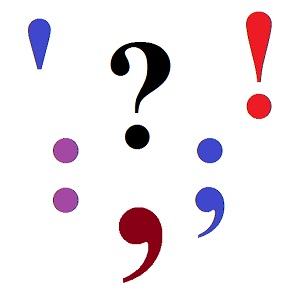Teaching Punctuation and Writing Conventions to Students with Visual Impairments
Submitted by JudiC on Dec 08, 2014

Classroom lesson focusing on on-going writing lessons aimed at improving writing conventions as well as other skills
Barriers with students who are blind or visually impaired include:
- Students with visual impairments do not always get the benefit of visual, spatially displayed, graphic organizers for writing tasks.
- Poor fine motor skills may interfere with writing fluency & speed
- Underlining and italics are visual qualities, both of which are represented in braille by the emphasis indicator, but the differences between bold, underline, and italics are not discerned in braille.
- Students with visual impairments often struggle more with spelling, due to the nature of the English language
- Braille materials are not always stimulating due to lack of picture clues, color, etc.
Other foundational skills addressed:
-
Using correct capitalization
-
Use of commas and quotation marks in addresses, dialogue, direct speech, before a coordinating conjunction in a compound sentence, and quotations from a text
-
Form and use of possessives
-
Use conventional spelling for high frequency and other studied words and for adding suffixes to base words.
-
Use spelling patterns and generalizations (e.g., word families, position-based spelling, syllable patterns, ending rules, meaningful word parts) in writing words
-
Consulting reference materials including beginning dictionaries, as needed to check and correct spellings
Procedure:
Plan:
Individually introduce use of capitalization, punctuation (comma, underline, quotation marks, and italics) and spelling strategies.
Strategies:
- Self-checking of written work and then discussion with instructor.
- Use of a “memory aid” book with colorful & tactual graphic templates to remember items such as “CUPS” – Capitalization, Usage, Punctuation & Spelling.
- Use of a dictionary and spell check.
- Classroom teacher should verbally describe graphic organizers.
- Materials should be modified to incorporate a tactual model.
- Incorporate technology, such as a braille note-taker, iPad, etc.
- Strategies can be conveyed to the classroom teacher at a weekly consultation meeting and incorporated with the help of a teaching assistant.
Variations:
Functional skills from the Expanded Core Curriculum (ECC) can be incorporated into the lesson, using the examples below:
- Visual Efficiency Skills – using residual vision to understand tasks
- Independent Living Skills – time management
- Compensatory Skills – concepts, organization, listening, study skills, reference skills, note-taking skills, reading charts, graphs, diagrams, braille code, reading & writing, use of adaptations & modifications
- Assistive Technology – use of a braille note-taker, use of a word processor
